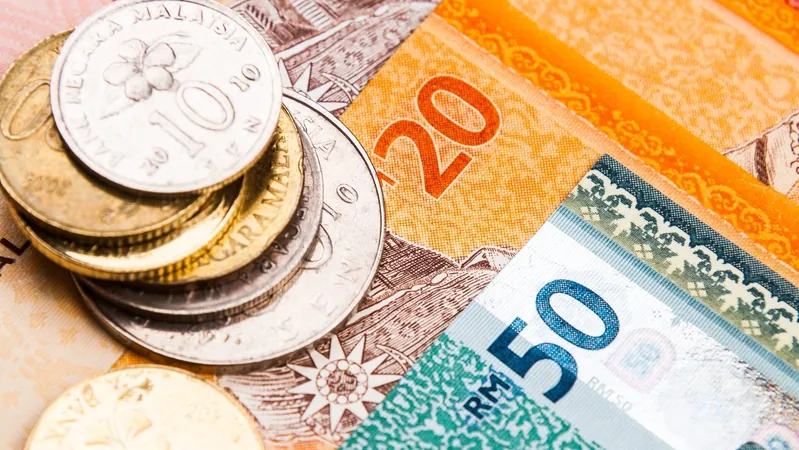
Malaysian Ringgit Soars Amid Surge in Foreign Investments, Affecting Singapore Dollar's Purchasing Power
2024-10-10
Author: Wei Ling
Malaysian Ringgit Soars Amid Surge in Foreign Investments, Affecting Singapore Dollar's Purchasing Power
SINGAPORE – The Malaysian ringgit is experiencing a remarkable surge, significantly impacting the purchasing power of the Singapore dollar for residents shopping, dining, or vacationing in Johor Bahru. Earlier this year, the Singapore dollar commanded much more value; the exchange rate was S$1 = MYR3.5725 in February, but today it stands at S$1 = MYR3.28, leading to a tighter budget for Singaporeans in Malaysia.
The primary driver behind this strengthening of the ringgit is a substantial increase in foreign direct investment (FDI) into Malaysia. Esteemed multinational corporations, including Microsoft, Google, ByteDance, Intel, and Amazon Web Services, have made impressive financial commitments in Malaysia, signaling renewed confidence in the country's economy.
The Milken Institute's Global Opportunity Index 2024 highlights Malaysia as a frontrunner among Asia's emerging and developing countries, positioned favorably in terms of investment conditions. Furthermore, international law firm Trowers has identified Malaysia as 'your next FDI destination,' with significant investments flowing in from Singapore, the USA, China, Japan, and the Netherlands.
This positive turn is a sharp contrast to earlier this year. In April, the Malaysian ringgit had plummeted to its lowest point in 26 years against the US dollar, reaching a troubling rate of US$1 to RM4.8, amid challenges like high inflation affecting local livelihoods. However, by early August, the situation had pivoted dramatically, with the ringgit climbing to its best performance in 18 months at a rate of US$1 to RM4.42. Analysts began to predict the ringgit would be the top-performing currency in Asia during this time.
A recent report from UOB’s Global Economics and Market Research indicates a sustained healthy investment landscape in Malaysia, with a highly positive outlook for FDI in the near to medium term. The country has seen a remarkable 15-year growth trend averaging 3.6% annually, positioning it to potentially attract an annual FDI of RM51.6 billion (approximately S$15.7 billion) by 2030, given a stable economic environment. This is a far cry from the previous year's FDI, which dwindled to S$11.34 billion.
The optimism is echoed in UOB’s report, which states, 'Our projection is bolstered by the 2024 year-to-date performance of FDIs, with Malaysia attracting US$3.1 billion (S$4.04 billion) in FDI inflows in the first half of 2024—a 17.9% increase compared to US$2.6 billion (S$3.39 billion) recorded in the same period last year.'
As the Malaysian economy continues to thrive and attract investments, the evolving dynamics of regional currencies, particularly the implications for the Singapore dollar, are set to remain a crucial topic for both economists and consumers alike. Will the Malaysian ringgit maintain its momentum, or will it face another downturn? The future remains uncertain, but one thing is clear: the tide of foreign investments is reshaping Malaysia's economic landscape and, in turn, influencing its neighbors.



 Brasil (PT)
Brasil (PT)
 Canada (EN)
Canada (EN)
 Chile (ES)
Chile (ES)
 España (ES)
España (ES)
 France (FR)
France (FR)
 Hong Kong (EN)
Hong Kong (EN)
 Italia (IT)
Italia (IT)
 日本 (JA)
日本 (JA)
 Magyarország (HU)
Magyarország (HU)
 Norge (NO)
Norge (NO)
 Polska (PL)
Polska (PL)
 Schweiz (DE)
Schweiz (DE)
 Singapore (EN)
Singapore (EN)
 Sverige (SV)
Sverige (SV)
 Suomi (FI)
Suomi (FI)
 Türkiye (TR)
Türkiye (TR)